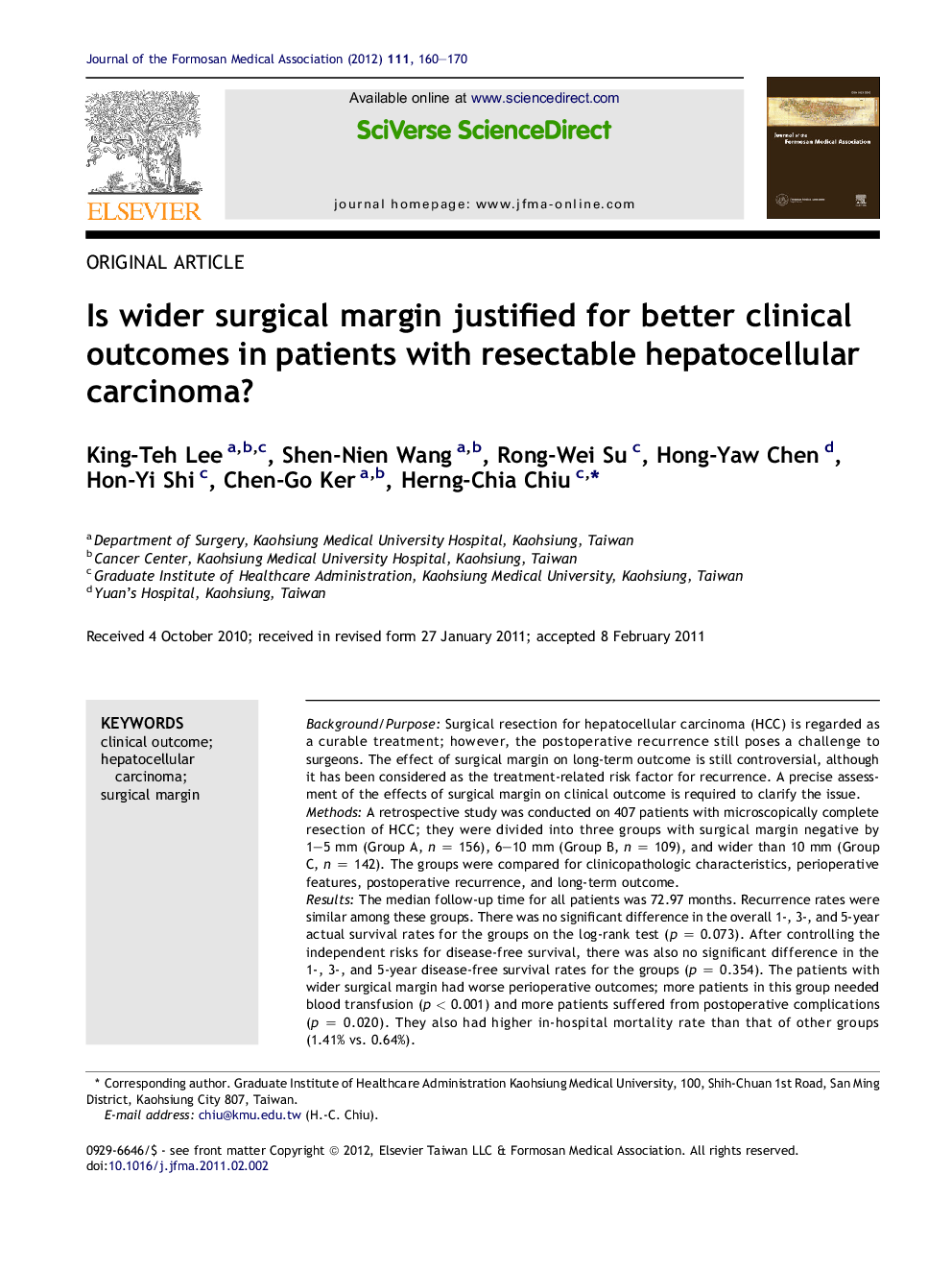| Article ID | Journal | Published Year | Pages | File Type |
|---|---|---|---|---|
| 3479487 | Journal of the Formosan Medical Association | 2012 | 11 Pages |
Background/PurposeSurgical resection for hepatocellular carcinoma (HCC) is regarded as a curable treatment; however, the postoperative recurrence still poses a challenge to surgeons. The effect of surgical margin on long-term outcome is still controversial, although it has been considered as the treatment-related risk factor for recurrence. A precise assessment of the effects of surgical margin on clinical outcome is required to clarify the issue.MethodsA retrospective study was conducted on 407 patients with microscopically complete resection of HCC; they were divided into three groups with surgical margin negative by 1–5 mm (Group A, n = 156), 6–10 mm (Group B, n = 109), and wider than 10 mm (Group C, n = 142). The groups were compared for clinicopathologic characteristics, perioperative features, postoperative recurrence, and long-term outcome.ResultsThe median follow-up time for all patients was 72.97 months. Recurrence rates were similar among these groups. There was no significant difference in the overall 1-, 3-, and 5-year actual survival rates for the groups on the log-rank test (p = 0.073). After controlling the independent risks for disease-free survival, there was also no significant difference in the 1-, 3-, and 5-year disease-free survival rates for the groups (p = 0.354). The patients with wider surgical margin had worse perioperative outcomes; more patients in this group needed blood transfusion (p < 0.001) and more patients suffered from postoperative complications (p = 0.020). They also had higher in-hospital mortality rate than that of other groups (1.41% vs. 0.64%).ConclusionNo superiority was seen in patients with wider surgical margin in either perioperative features or long-term outcome.
